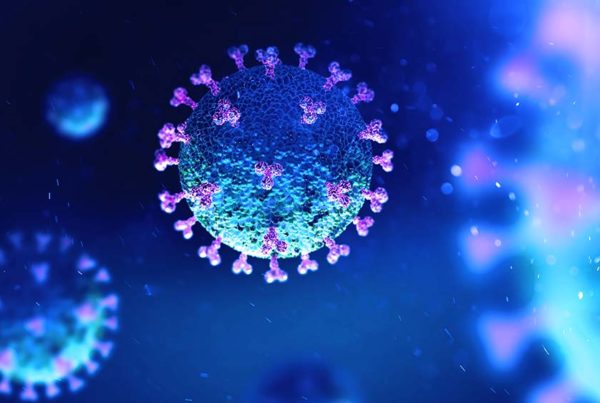
“High fat” and “low fat” can still be confusing and impractical terms, especially considering that men and women respond differently. Here’s a simple explanation.
Over the last few decades the nutritional view of dietary fat has run the gamut from “any amount is bad” to “high fat is best.” This has caused a lot of confusion for many people, especially with terms like high- and low-fat, the notion that different types of fats matter, and the fact that natural fats have been known to be nutritionally essential for more than a century.
Decades ago, my very first book manuscript was called “The Big Fat Lie,” referring to the importance of healthy fats in a natural diet. Publishers were taken aback by this title and I eventually used it as a chapter heading.
A diet containing 30 percent fat was a standard recommendation for many years by even the most conservative professional groups. Yet the social cry for low- and no-fat was stronger, enough to hide the science.
Today, an upper limit on fat has essentially been lifted, as natural dietary fat is knowingly not been associated with poor health. Even saturated fat, which was once thought to be the worst, demonstrates health benefits. Yet, fat phobia still lingers on in the minds of many.
Let’s keep it simple: Instead of high, I use the term excess when describing fat consumption so high as to be unhealthy.
There are a number of reasons why eating a certain amount of fat can be harmful — or healthy. While each of us is a bit different in our nutrient needs, even men and women respond differently to fat intakes, there is no single caloric fat figure that’s the cutoff. Instead, there’s a range of healthy intake, with levels above and below being higher risk of excess and deficiency.
While the need for fat in our diets must be personalized, one thing is clear: We all require judicious amounts — this range of healthy fat intake is based on metabolism, caloric needs, aerobic status, body size, and other health and fitness factors. Those who avoid junk food and have lowered their carbohydrate intake typically migrate to higher, rather than lower, amounts of fat because of their natural metabolic requirements.
Likewise, too little intake of healthy fat can lead to deficiencies of nutrients like essential fatty acids. Without a good amount of fat in our meals, satiety can be impaired, causing hunger after meals. The failure of the low-fat trend in part is due to this problem — ultimately, hungry people tend to eat too much unhealthy food.
Obviously, any amount of unhealthy fat is excessive. The worst offenders include trans fat or any hydrogenated fat, and omega-6 vegetable oils like corn, peanut, canola, soy and safflower.
However, studies do demonstrate that even excess healthy fat can be harmful. Two specific outcomes, just like with unhealthy fats, are increased oxidative stress and inflammation, both of which can significantly impair health and fitness, especially aging. In a study by McAllister et al., researchers showed that a 42-gram dose of fat in the form of medium-chain triglycerides created oxidative stress. This is an example of excess fat, despite being a healthy source.
To put this amount of fat in perspective, it’s much higher than my fat-burning coffee recipe, which is typically about 25 grams for the full fat version — even higher than a breakfast of four eggs with 4 slices of bacon, or a big fatty rib-eye steak for dinner.
While other studies demonstrating dangers of excess fat used even higher amounts, Cipryan et al. also showed that a very low-carbohydrate high-fat diet did not cause inflammation. Test subjects consumed less than 50 grams of carbohydrates a day and used butter, coconut and olive oils, and heavy cream, with fat making up about 67 percent of their 1,800-calorie diet.
Unhealthy eating can make “high” lower.
Consider that about half the refined carbohydrates one consumes turns to fat and is immediately stored. This often leads to excess body fat which is also unhealthy stored fat triggering inflammation, impaired immunity and increased risk for physical impairment and disease. So if less fat is consumed in a high-carbohydrate diet — typically low-fat — more fat may be stored.
In addition, when antioxidant nutrients are low — a common problem when junk food is consumed — lower amounts of dietary fat can still cause harm.
The worst scenario: Junk food + bad fat + excess fat. For example, a Burger King Whopper with medium fries is a whopping 70 grams. And this isn’t all most people order. But just this is enough fat to immediately create significant bodywide oxidative stress and inflammation, among other metabolic and nutritional problems.
By following your body’s natural needs — avoiding junk food and transitioning to a natural way of eating like our ancestors did — we usually end up eating a menu high in healthy fat, with low carbohydrate and moderate protein.
As part of being superior fat-burners, potentially, healthy women utilize dietary fats better than men. In metabolizing blood triglycerides (the fats in the blood following a meal) after consumption of higher-fat meals, women potentially generate less oxidative stress. While estrogen appears to play a role, women’s aerobic muscle mitochondria may also have greater antioxidant activity.
Eating high fat foods can be good or bad — choose your sides wisely!
Related link:
Calorie restriction, ketosis and aging
References
Bloomer RJ, Fisher-Wellman KH. Lower postprandial oxidative stress in women compared with men. Gend Med. 2010;7(4). doi: 10.1016/j.genm.2010.07.001.
Cipryan L, et al. Effects of a four-week very low-carbohydrate high-fat diet on biomarkers of inflammation: Non-randomised parallel-group study. 2020 Mar;26(1):35-42.
doi: 10.1177/0260106020903206.
McAllister MJ, et al. Acute coffee ingestion with and without medium chain triglycerides decreases blood oxidative stress markers and increases ketone levels. Can J Physiol Pharmacol. 2019. doi: 10.1139/cjpp-2019-0458.








